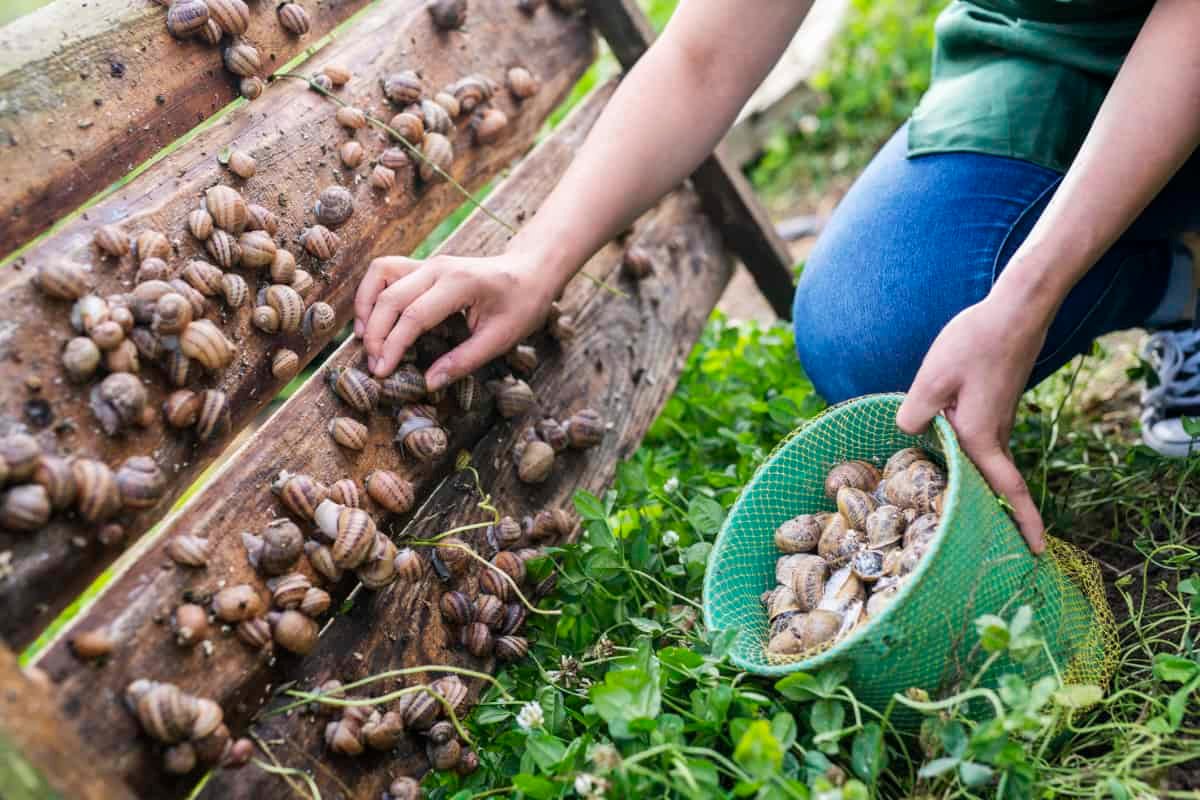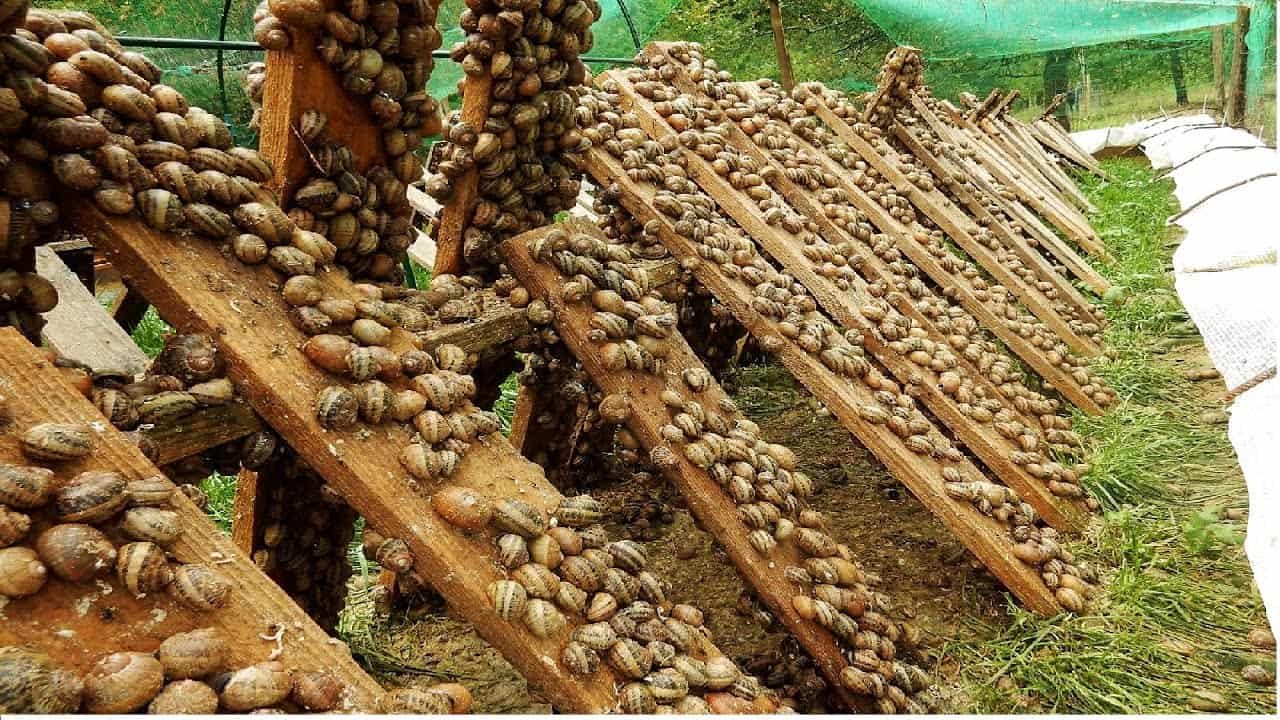How to Start a Snail Farm? Begin your snail farm by selecting a suitable location with adequate shade and moisture, constructing appropriate housing or enclosures, sourcing healthy breeding stock, providing a balanced diet of greens and calcium-rich foods, and implementing proper humidity and temperature controls to ensure optimal growth and reproduction of the snails.
Escargot Entrepreneurship: How to Turn Your Love for Snails into a Lucrative Business
Escargot entrepreneurship refers to the business of cultivating and selling snails, specifically for the purpose of producing escargot, a delicacy enjoyed by many around the world.
This unique business opportunity offers entrepreneurs the chance to tap into a niche market with high demand and limited competition. While escargot may not be as mainstream as other food products, it has a dedicated consumer base that is willing to pay a premium for this gourmet dish.
Understanding the Market: Who Buys Escargot and Why?
The market for escargot is diverse, with consumers ranging from individuals who enjoy fine dining experiences to those who appreciate unique and exotic foods. Demographically, escargot consumers tend to be more affluent and have a higher disposable income. They are often food enthusiasts who are willing to try new and adventurous dishes.
There are several reasons why people buy escargot. Firstly, it is considered a delicacy in many cultures and is often associated with luxury and indulgence. The unique texture and flavor of escargot make it an appealing choice for those looking for something different from the usual fare. Additionally, escargot is known for its nutritional value, being high in protein and low in fat.
Market trends indicate that there is a growing interest in gourmet and exotic foods, with consumers becoming more adventurous in their culinary choices. This presents an opportunity for entrepreneurs in the escargot industry to capitalize on this trend and cater to the increasing demand for unique and high-quality food products.
Starting Small: How to Begin Your Escargot Business from Home
Starting small is often the best approach when venturing into the escargot business. This allows entrepreneurs to test the market and gain experience before scaling up their operations. One of the benefits of starting small is that it requires minimal investment, making it accessible to individuals with limited resources.
Before starting an escargot business, it is important to understand the legal requirements. This may include obtaining the necessary permits and licenses, as well as complying with health and safety regulations. It is advisable to consult with local authorities or seek legal advice to ensure compliance with all applicable laws.
In terms of equipment and supplies, a basic setup for an escargot business would include snail enclosures, feeding trays, and a suitable environment for snail cultivation. Snails require a moist and cool environment, so it is important to create the right conditions for their growth and development. Additionally, entrepreneurs will need to source snails, which can be obtained from reputable suppliers or through snail farming.
Cultivating Snails: A Beginner’s Guide to Snail Farming
Snail farming, also known as heliciculture, is the process of raising snails for commercial purposes. It involves creating a suitable habitat for snails and providing them with the necessary care and feeding. Snail farming can be done on a small scale, making it an ideal option for entrepreneurs starting their escargot business from home.
There are several types of snails that are commonly used for escargot production. The most popular species include Helix pomatia (also known as the Roman snail), Helix aspersa (common garden snail), and Achatina fulica (giant African land snail). Each species has its own characteristics and requirements, so it is important to choose the right species based on factors such as climate, market demand, and personal preferences.
Basic care and feeding of snails involve providing them with a suitable habitat that mimics their natural environment. This includes ensuring proper ventilation, humidity levels, and temperature control. Snails are herbivores and feed on a variety of plant materials such as leaves, fruits, and vegetables. It is important to provide them with a balanced diet to ensure their health and growth.
Choosing the Right Snail Species: Which Escargot is Best for Your Business?
When choosing the right snail species for your escargot business, it is important to consider several factors. Firstly, climate plays a crucial role in snail farming, as different species have different temperature and humidity requirements. It is important to choose a species that is well-suited to the local climate to ensure the success of your farming operations.
Market demand is another important factor to consider when choosing a snail species. Some species, such as Helix pomatia, are highly sought after and command a higher price in the market. However, they may also require more specialized care and have slower growth rates compared to other species. It is important to strike a balance between market demand and the feasibility of farming a particular species.
Different snail species also have different taste profiles and textures, which can influence consumer preferences. It is advisable to conduct market research and gather feedback from potential customers to determine which snail species would be most appealing to your target audience.
| Snail Species | Common Name | Climate Preference | Growth Rate | Reproduction Rate | Market Considerations |
|---|---|---|---|---|---|
| Achatina achatina | Giant Tiger Snail | Tropical/Subtropical | Fast | High | Large size, popular edible species |
| Achatina fulica | Giant African Snail | Tropical/Subtropical | Fast | Very High | Widely available, some markets may be saturated |
| Archachatina marginata | West African Snail | Tropical/Subtropical | Moderate | Moderate | Large size, good meat quality |
| Helix aspersa | Garden Snail | Temperate | Moderate | Moderate | Smaller size, culinary uses |
| Helix pomatia | Roman Snail | Temperate | Slow | Low | Delicacy in some markets, longer production cycle |
Escargot Farming Best Practices: How to Ensure Healthy and Productive Snails
Maintaining a healthy snail population is crucial for the success of your escargot business. There are several best practices that can help ensure the well-being and productivity of your snails.
Firstly, it is important to provide a suitable habitat for your snails. This includes creating an enclosure that provides adequate ventilation, humidity, and temperature control. Snails thrive in moist environments with temperatures ranging from 15-25 degrees Celsius.
Feeding your snails a balanced diet is essential for their health and growth. Snails are herbivores and require a variety of plant materials in their diet. This can include leaves, fruits, vegetables, and other plant-based foods. It is important to provide a diverse range of food sources to ensure that your snails receive all the necessary nutrients.
Regular monitoring and observation of your snails is important to identify any signs of disease or stress. Common snail diseases include shell rot, bacterial infections, and parasitic infestations. It is important to take prompt action if any signs of illness or disease are observed, such as isolating affected snails and seeking veterinary advice if necessary.
Maximizing productivity can be achieved through proper management practices. This includes regular cleaning of the snail enclosures, removing any dead or diseased snails, and ensuring optimal conditions for breeding and reproduction. It is also important to monitor the growth rates of your snails and adjust feeding and care practices accordingly.
Harvesting and Processing Escargot: Techniques for Optimal Flavor and Texture
Harvesting escargot involves carefully removing the snails from their enclosures without causing any harm or stress. This can be done by gently picking up the snails by hand or using a small tool such as tweezers. It is important to handle the snails with care to avoid damaging their shells or causing them unnecessary stress.
Once harvested, the snails need to be cleaned and prepared for cooking. This involves removing any dirt or debris from their shells and rinsing them thoroughly under running water. It is important to ensure that the snails are clean and free from any contaminants before cooking.
Cooking methods for escargot vary depending on personal preferences and cultural traditions. The most common method involves cooking the snails in a garlic butter sauce, which enhances their natural flavor and adds a rich and savory taste. Other cooking methods include grilling, baking, or sautéing the snails with various herbs and spices.
The cooking time for escargot can vary depending on the size of the snails and the desired level of doneness. It is important to follow recipes or guidelines to ensure that the snails are cooked properly and have the desired texture. Overcooking can result in tough and rubbery snails, while undercooking can lead to a raw and unpleasant taste.
Marketing Your Escargot Business: How to Reach Your Target Audience
To successfully market your escargot business, it is important to identify your target audience and create a brand identity that resonates with them. Understanding the preferences and needs of your target audience will help you tailor your marketing strategies to effectively reach and engage with them.
Identifying your target audience involves conducting market research and gathering information about their demographics, preferences, and purchasing behavior. This can be done through surveys, interviews, or by analyzing existing data. Once you have a clear understanding of your target audience, you can develop marketing messages and strategies that will resonate with them.
Creating a strong brand identity is essential for differentiating your escargot business from competitors and building customer loyalty. This includes developing a unique brand name, logo, and visual identity that reflects the values and personality of your business. It is important to communicate your brand story and value proposition effectively to attract and retain customers.
Marketing strategies for reaching your target audience can include a combination of online and offline tactics. Online marketing channels such as social media, websites, and email marketing can help you reach a wider audience and engage with potential customers. Offline tactics such as participating in food festivals, hosting tasting events, or partnering with local restaurants can also be effective in raising awareness and generating interest in your escargot products.
Pricing Strategies: How to Set Your Escargot Prices for Maximum Profit
Setting the right prices for your escargot products is crucial for maximizing profit margins while remaining competitive in the market. There are several factors to consider when determining the pricing strategy for your business.
Firstly, it is important to consider the cost of production, including the expenses associated with snail farming, harvesting, processing, and packaging. This will help you calculate the minimum price that you need to charge in order to cover your costs and achieve a profit.
Market demand and competition are also important factors to consider when setting prices. If there is high demand for escargot in your target market and limited competition, you may be able to charge a premium price. On the other hand, if there is intense competition or low demand, you may need to adjust your prices accordingly to remain competitive.
It is also important to consider the perceived value of your escargot products. This can be influenced by factors such as the quality of your snails, the uniqueness of your recipes or cooking methods, and the overall brand image of your business. If customers perceive your products as high-quality and unique, they may be willing to pay a higher price.
Maximizing profit margins can be achieved through effective cost management and pricing strategies. This can include reducing production costs through efficient farming practices, negotiating favorable deals with suppliers, and optimizing packaging and distribution processes. It is also important to regularly review and adjust your prices based on market conditions and customer feedback.
Scaling Up: Expanding Your Escargot Business for Greater Success
Once your escargot business has established a strong foundation and gained traction in the market, you may consider scaling up your operations to meet increased demand and achieve greater success. There are several strategies that can help you expand your business effectively.
One strategy for scaling up is to increase production capacity by expanding your snail farming operations. This can involve investing in additional equipment, hiring more staff, or acquiring more land for snail enclosures. It is important to carefully plan and manage the expansion process to ensure that it is sustainable and does not compromise the quality of your products.
Another strategy for growth is to diversify your product offerings. This can include developing new escargot recipes or variations, introducing complementary products such as sauces or condiments, or expanding into related food categories. Diversification can help you attract new customers and increase sales by offering a wider range of options.
Financing options for growth can include self-funding through reinvesting profits, seeking external funding from investors or lenders, or partnering with other businesses. It is important to carefully evaluate the financial implications of each option and choose the one that best aligns with your business goals and resources.
Managing increased demand requires effective supply chain management and distribution strategies. This can include partnering with wholesalers or distributors to reach a wider customer base, optimizing inventory management processes to ensure timely delivery, and investing in technology and systems that can support increased production and distribution.
The Future of Escargot Entrepreneurship and Your Role in It.
Escargot entrepreneurship offers a unique business opportunity for entrepreneurs who are passionate about gourmet food and are willing to tap into a niche market. With the growing interest in exotic and gourmet foods, there is a promising future for the escargot industry.
By understanding the market, cultivating snails using best practices, choosing the right snail species, and implementing effective marketing and pricing strategies, entrepreneurs can successfully establish and grow their escargot business. Scaling up operations and managing increased demand requires careful planning and execution, but can lead to greater success and profitability.
If you are interested in pursuing this unique business opportunity, it is important to conduct thorough research, seek advice from experts in the field, and develop a solid business plan. With dedication, hard work, and a passion for gourmet food, you can carve out a successful niche in the escargot industry.





